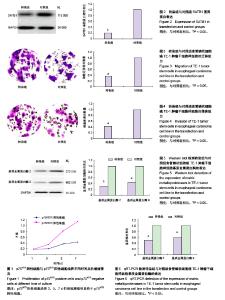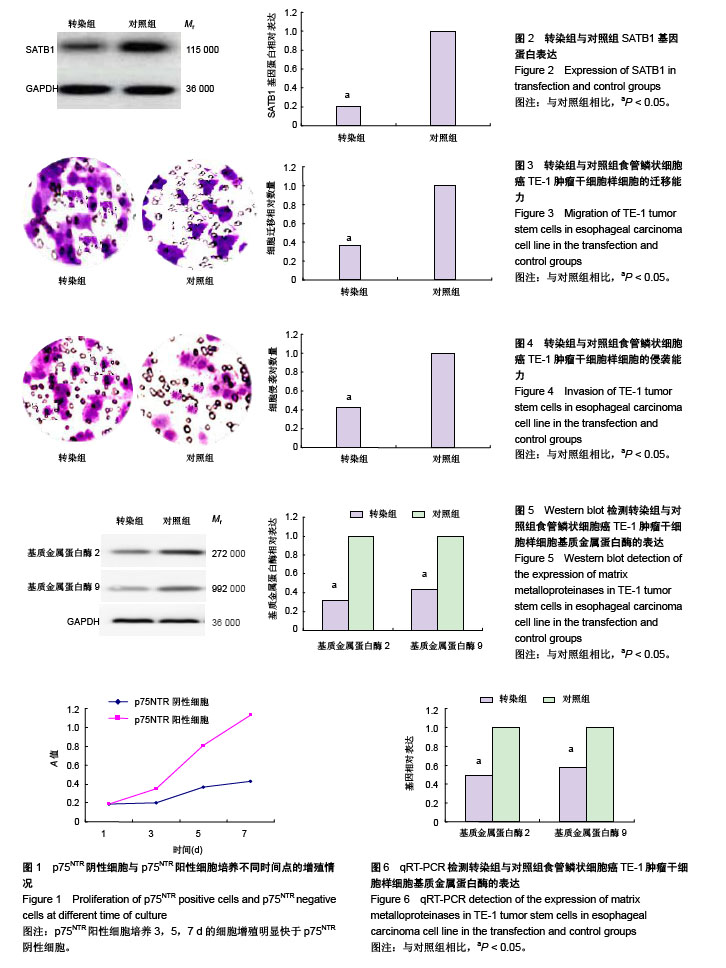| [1] Sun H, Zou S, Zhang S, et al. Elevated DNA polymerase iota (Poli) is involved in the acquisition of aggressive phenotypes of human esophageal squamous cell cancer. Int J Clin Exp Pathol.2015;8(4):3591-601. [2] Chen P, Fang M, Wan Q, et al. High-sensitivity modified Glasgow prognostic score (HS-mGPS) Is superior to the mGPS in esophageal cancer patients treated with chemoradiotherapy. Oncotarget.2017;8(59):99861-99870. [3] 刘盈君,刘守钦,王家林,等.济南市2011-2015年食管癌流行特征分析[J].中华肿瘤防治杂志,2017,24(3):147-150.[4] 艾军华,时军.肿瘤干细胞和上皮-间质转化之间的关系及其在肿瘤侵袭转移中的作用[J].医学综述,2015,21(12):2180-2183.[5] 李远强,张坤,孙丽丹.肿瘤干细胞靶向给药系统的研究进展[J].海南医学,2017,28(2):260-262.[6] Tabe Y, Konopleva M. Leukemia stem cells microenvironment. Adv Exp Med Biol. 2017;1041:19-32. [7] Wang T, Fahrmann JF, Lee H, et al.JAK/STAT3-regulated fatty acid β-Oxidation is critical for breast cancer stem cell self-renewal and chemoresistance. Cell Metab. 2018;27(1): 136-150. [8] 李安.艾迪注射液联合FOLFOX4化疗对晚期结肠癌患者肿瘤干细胞特性及抗肿瘤免疫应答的影响[J].海南医学院学报,2017, 23(8):1113-1116.[9] 廖星芸,汪洋,孙建国,等.IR-780联合阿霉素对肝癌干细胞样细胞的杀伤效应研究[J].第三军医大学学报,2017,39(12): 1206-1212.[10] 朱海振,耿涛,李雪涛,等.利用分子信标检测microRNA并成像肺癌干细胞的实验研究[J].重庆医学,2016,45(15):2036-2039.[11] 佟冬冬,张风河,姚瑶,等.p75神经营养蛋白受体阳性舌鳞状细胞癌细胞的生物学特性研究[J].华西口腔医学杂志,2014,(1): 18-22.[12] 佟冬冬.p75神经营养因子受体作为舌鳞癌干细胞表面标志物的实验研究[J].山东大学,2012.[13] 王峰.p75<'NTR>作为食管鳞癌干细胞膜蛋白标志的实验研究[D].第二军医大学,2009.[14] 孙志刚,黄盛东,张宝仁,等.应用p75NTR分选食管肿瘤干细胞并鉴定其生物学特性[J].第二军医大学学报,2009,30(5):481-486.[15] Wang Q, Hu SC, Yang CS, et al. Inhibition of prostate cancer cell growth in vivo with short hairpin RNA targeting SATB1. Oncol Lett.2017;14(6):6592-6596. [16] Tanaka Y, Sotome T, Inoue A, et al.SATB1 conditional knockout results in sjögren's syndrome in mice.J Immunol. 2017;199(12):4016-4022. [17] Choudhary D, Clement JM, Choudhary S, et al.SATB1 and bladder cancer: Is there a functional link? Urol Oncol. 2018; 36(3):93.e13-93.e21 [18] Lee JJ, Kim M, Kim HP. Epigenetic regulation of long noncoding RNA UCA1 by SATB1 in breast cancer.BMB Rep. 2016;49(10):578-583.[19] 黄盛东,刘晓红,袁扬,等.食管癌中p75NTR阳性细胞池的变化与顺铂耐药机制的研究[J].中华实验外科杂志,2007,24(12): 1560-1562.[20] 瞿丛新,吴莹莹.SATB1和E-cad在乳腺癌中的表达及其与淋巴结转移的关系[J].检验医学与临床,2017,14(8):1116-1118.[21] 吴冬梅.SATB1表达调控肝癌转移能力的临床病理学意义[D].南昌大学,2015.[22] 高超,朱艳卿,刘颖,等.SATB1基因在结直肠癌中的表达及其临床意义[J].肿瘤防治研究,2013,40(2):159-163.[23] 吴晓飞,朱朝辉,万锋,等.AT富集序列特异性结合蛋白1在人膀胱移行细胞癌组织中的表达及其与上皮间质转化的关系[J].中华实验外科杂志,2013,30(6):1145-1148.[24] 王坤,颜克强,刘承,等.SATB1在肾透明细胞癌中的表达及临床意义[J].中国现代医学杂志,2011,21(25):3106-3109,3115.[25] 刘康,李杰,王兰,等.SATB1基因在食管癌中的表达及临床意义[J].川北医学院学报, 2015,30(4):447-450.[26] Shi ZM, Liu YN, Fu B, et al. Expression profile of eukaryotic translation initiation factor and matrix metalloproteinase 9 in endometrial cancer tissue. J Biol Regul Homeost Agents. 2017;31(4):1053-1059.[27] Weng H, Zeng XT, Wang XH, et al. Genetic association between matrix metalloproteinases gene polymorphisms and risk of prostate cancer: a meta-analysis. Front Physiol.2017; 8:975. |

